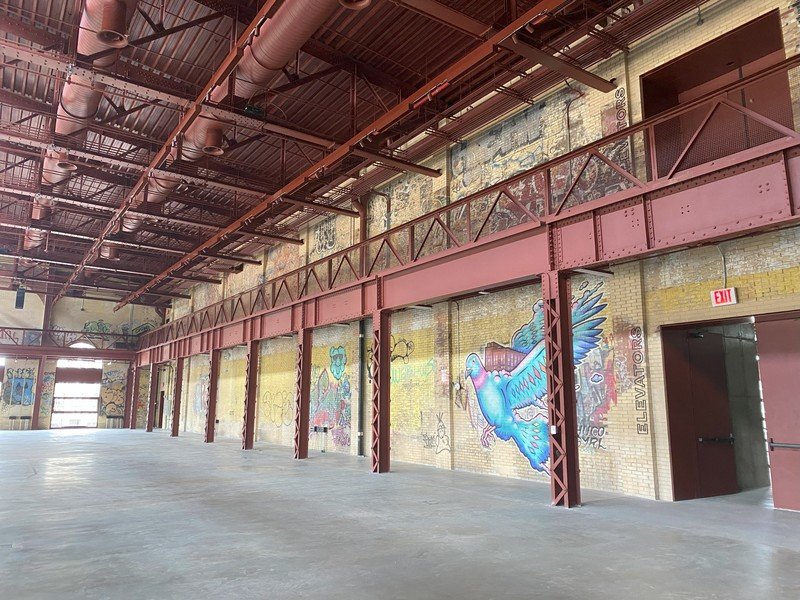AEA Consulting’s analysis in the 2023 Cultural Infrastructure Index reveals that renovation and adaptive reuse were popular project categories among projects announced and completed in 2023 with budgets US$10 million and over – with little sign of slowing down. Combined, these projects accounted for 41% of total projects or 78 completed projects.
This year’s Index features an in-depth look at what’s driving this trend and the opportunities for cultural institutions (and their project teams) to achieve sustainability goals through adaptive reuse. The Index includes a case study on Powerhouse Arts, a non-profit arts organisation in Brooklyn, New York, housed in the decommissioned Brooklyn Transit Power Station built in 1904.
We spoke to Eric Shiner, president of Powerhouse Arts to learn more about the project.
Which came first, the building or program? Did the building inspire the program or did the program lead to the building?
The organization's program and the vision for the facility came about in tandem. The site of the former Brooklyn Rapid Transit Power Station inspired the establishment of an arts organization that would reinvigorate the building in the name of art.
As the site was secured and remediation efforts — extensive prerequisite efforts to bring the site to a state of health and hygiene before it could be redeveloped — were underway, Powerhouse Arts, the organization, was founded and piloted its program in satellite shops across the borough, informed by numerous community round tables and R&D efforts to identify and articulate the core needs of NYC's artistic community.
What were the main challenges of adapting an existing building?
The Turbine Hall was the only existing building on the site. The derelict state of the extant structure required extensive efforts to fortify and reinforce what remained. The project demanded thorough and meticulous tests, including load tests of the existing concrete slab and the remaining masonry, before it could be determined fit for adaptation. It was also decided that the Boiler House would be rebuilt and reintegrated in the footprint of the original to house the organization's fabrication activities.
You've decided to keep some of the historic elements in place (such as the walls of graffiti), why did you feel this was important?
The intention was to embrace the building's varied history — first as a power station and later as a haven for local artist's seeking refuge, creative freedom, and radical possibility. The design program celebrates the architectural details that point to these chapters of the building's history. The architects were clear in their decision to allow the patina to remain a part of the building's transformed identity, ready to take on the next century’s traces of use.
How does the building’s character as an industrial space impact the users?
The Powerhouse Arts facility is one of the few sites that remains zoned for industrial use in Gowanus and that still operates as a hub for arts fabrication and creative production. The building's industrial character is therefore authentic to the activities that take place within its walls — nodding both to its history as a critical piece of Brooklyn infrastructure, and today as the art factory that it is.
Was Herzog and DeMeuron’s experience in adaptive reuse (e.g., Tate Modern) important in the choice of them as architects?
The architecture team, composed of Herzog & de Meuron and PBDW among many others, were selected from an RFP process. There is no doubt that the architects' thoughtful history of treating adaptive reuse projects with integrity and respect for the past was a distinguishing factor in the decision-making process. Ultimately, their vision to reactivate the building as both an arts factory and a multi-use creative hub was optimally aligned for the organization's long-term objectives.
Did you approach the redevelopment with sustainability in mind? If so, what architectural decisions did it affect?
The facility was developed with a keen focus on the health and hygiene of contemporary artists working within the space. For example, meticulous care was taken to research off-gassing of materials, to address the production of dust and other airborne materials, and to supply the building with a constant flow of clean air. State-of-the-art HVAC systems were installed, infrastructure set in place, and avenues for clean disposal of waste implemented. Powerhouse Arts' community sees themselves as stewards of the building and of the artistic community, and the processes taking place within the building nod to that disposition.
Read more insights in the 2023 Cultural Infrastructure Index here.

